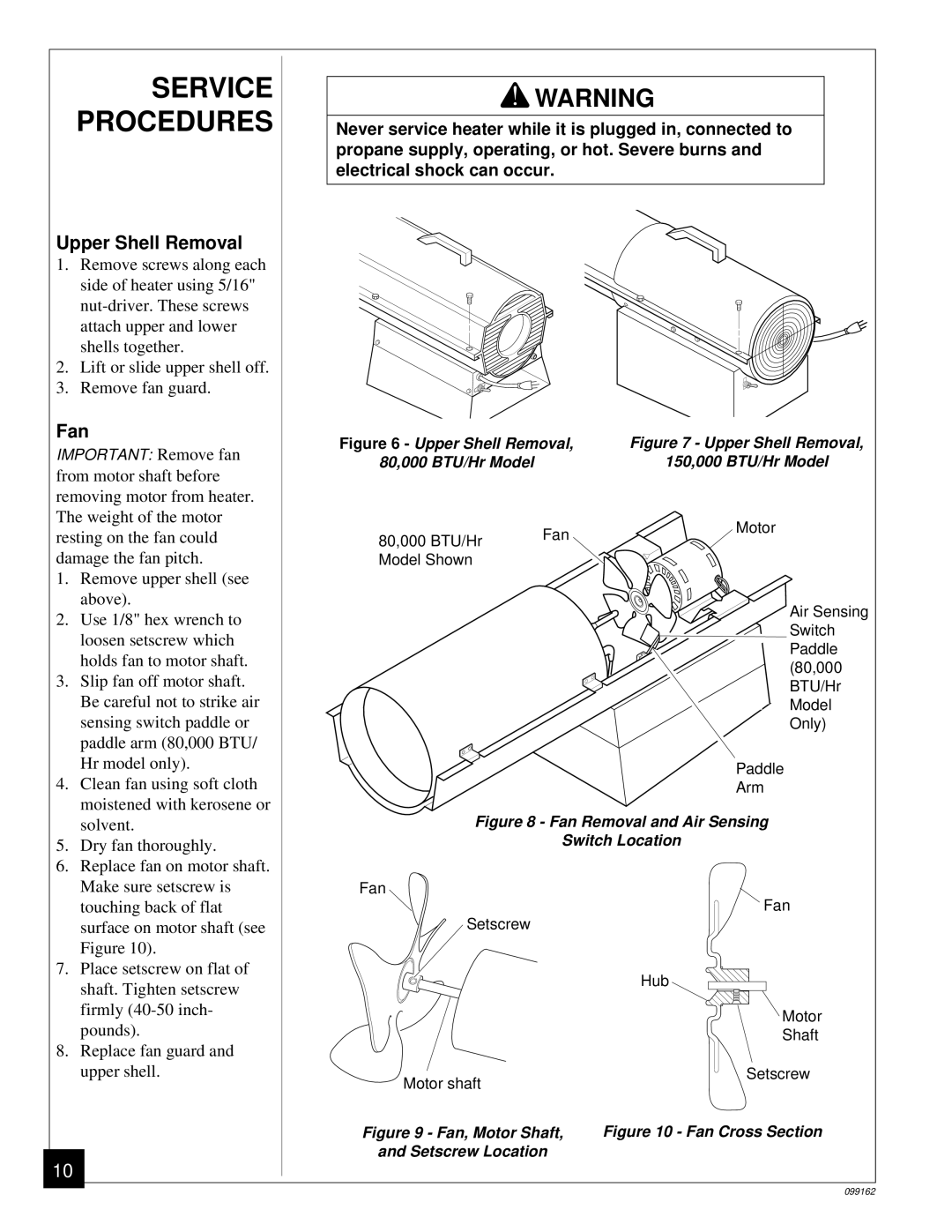ROPANE CONSTRUCTION HEATERS specifications
Desa Ropane Construction Heaters are renowned for their efficiency and reliability in providing heat in various construction environments. These powerful heaters are specifically designed to meet the demands of the construction industry, where maintaining a suitable temperature is crucial for worker safety and the integrity of materials.One of the main features of Desa Ropane heaters is their robust construction. Built to withstand the rigors of job sites, these heaters are made from durable materials that can resist wear and tear. This durability ensures that the heaters can operate in harsh conditions without compromising on performance.
Desa Ropane heaters utilize advanced infrared technology to produce heat. This technology allows for efficient heating, as infrared rays directly warm people and objects, rather than the air. This makes them especially effective in large, open spaces where conventional heating methods might struggle to maintain warmth. By focusing on direct heat transfer, these heaters minimize energy waste and reduce heating costs.
Another characteristic of Desa Ropane heaters is their user-friendly design. Many models come equipped with easy-to-use controls that allow operators to adjust the temperature settings quickly. This feature is particularly beneficial for construction workers who may need to respond rapidly to changing weather conditions. Additionally, several models feature built-in safety mechanisms, such as tip-over switches and overheat protection, ensuring safe operation even in the most challenging environments.
Portability is yet another strength of Desa Ropane heaters. Many models are lightweight and fitted with wheels, making it easy to move them around job sites as needed. This flexibility is invaluable in dynamic construction environments where heating requirements may change throughout the day.
Moreover, Desa Ropane heaters operate quietly, which is an essential feature for construction sites that may need to comply with noise regulations or where workers require a more peaceful working atmosphere.
In summary, Desa Ropane Construction Heaters are crafted with durability, efficiency, and user convenience in mind. With their infrared heating technology, built-in safety features, exceptional portability, and quiet operation, they are ideal solutions for meeting the heating needs in construction settings. Their reliable performance makes them a go-to choice for contractors and construction companies looking to ensure a warm and safe working environment during cold months.

